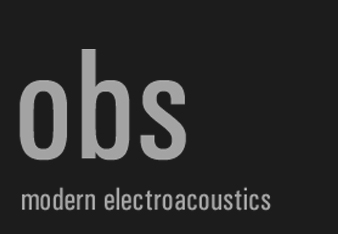
obs * акусма AUDIOR|056 cd v/a, 56 min
special digifile, booklet
VOX HUMANA
Inventing forgotten languages
cd: 15eur worldwide incl shipping ![]()
contact: abser1@yandex.ru
Vox Humana - Inventing forgotten languages
Presentation
While thinking of a time when languages were not yet shaped, one can reflect on his/her own language roots and try to capture, freeze and then re-vitalize the emotions expressed through vocal sounds. While evoking oral communication that precedes language, one can invent something similar to a protolanguage based on ‘gestural’ sounds, both noisy or tuned, instead on ‘denotative’ sounds. While inventing 'forgotten languages', one should think of languages of sounds, as they were deeply resonant of beings and things.
Se pensiamo all’epoca in cui i linguaggi non erano ancora formati, possiamo riflettere sulle nostre radici linguistiche e cercare di catturare, congelare e quindi rivitalizzare le emozioni espresse attraverso le vocalizzazioni. Nell’evocare la comunicazione orale che precede il linguaggio, possiamo inventare qualcosa di simile a un protolinguaggio basato su suoni 'gestuali', rumorosi o intonati, anziché su suoni 'denotativi'. Nell’inventare 'linguaggi dimenticati’ dovremmo pensare a linguaggi di soli suoni, e a come essi erano profondamente risonanti di esseri e di cose.
AUDIOR acousmonium
Designed and built in 2012 by Eraldo Bocca, the mobile acousmonium AUDIOR currently consists of a total of 60 speakers (between full range and “narrow band”) and 50 amps, and has one analog console spatialization of 32 channels and three 16-channel digital consoles. Some of the full-range speakers are modular and can be assembled so that they can be adapted to different configurations of the acousmonium. The “narrow band” speakers have different types in order to play the best audio range for which they are intended. In particular, the speakers for the mid-range are dipolar type, to take advantage of the issue reflected back from the walls of the concert hall, while the speakers for the high frequency are hyperbolic horns which allow a great deal of pressure and linearity of issue. The acousmonium AUDIOR has been especially designed for the interpretation of the electro-acoustic repertoire.
Progettato e realizzato nel 2012 da Eraldo Bocca, l’acusmonium AUDIOR è costituito attualmente da un totale di 54 diffusori (fra banda intera e “colorati”) e 44 amplificatori, dispone di una consolle di spazializzazione analogica di 32 canali e di tre consolle digitali da 16 canali. Alcuni degli altoparlanti a banda intera sono modulari e assemblabili in modo da poter essere adattati a diverse configurazioni. I diffusori “colorati” hanno tipologie diverse al fine di riprodurre al meglio la gamma audio cui sono destinati. In particolare, i diffusori per la gamma media sono di tipo dipolare per sfruttare anche l’emissione posteriore riflessa dalle pareti della sala da concerto, mentre i diffusori per gli alti sono trombe iperboliche che permettono una grande pressione e linearità di emissione.
p. s.:
~Actually~
Steven Brown explains the similarities between music and language by suggesting they originate in a single, ancient form of vocal communication that he terms ‘musilanguage’: “an ancestral stage that was neither linguistic nor musical but that embodied the shared features of modern-day music and language.” Musilanguage combined sound as emotive meaning and as referential meaning. Only later in human development did music and language separate onto different paths.
To use the terminology of the neuroscientist Steven Brown, who has made a particular study of music, both music and language involve a limited repertoire of discrete building blocks, organised into phrases and higher-order structures using combinatorial rules. Put simply, both organise individual acoustic elements using a kind of grammar, which can be built into larger structures such as novels and symphonies. For both we also use expressive phrasing, where we modulate acoustic properties such as pitch and rhythm “for the purposes of conveying emphasis, emotional state, and emotive meaning.” In both music and language, certain modes of symbolic expression are the same across all cultures and intensify along with the emotion: happiness is expressed through faster, louder and higher music or speech, sadness by the opposite. Dean Falk, an anthropologist who specialises in the evolution of the brain, tells us that language and music are “neurologically intertwined”, and has concluded that “they began evolving together by two million years ago”.
This is not a new idea. The Swiss philosopher Jean-Jacques Rousseau, for example, wrote in 1754 that “verse, singing and speech have a common origin... one spoke as much by natural sounds and rhythm as by articulations and words”. Charles Darwin, whose ideas on language and music remain relevant today, suggested it in 1871 in a context of sexual selection: When we treat of sexual selection we shall see that primeval man, or rather some early progenitor of man, probably first used his voice in producing true musical cadences, that is in singing, as do some of the gibbon-apes at the present day; and we may conclude from a widely-spread analogy, that this power would have been especially exerted during the courtship of the sexes, — would have expressed various emotions, such as love, jealousy, triumph, — and would have served as a challenge to rivals. It is, therefore, probable that the imitation of musical cries by articulate sounds may have given rise to words expressive of various complex emotions.
Zuriñe Fernandez Gerenabarrena - Hoshi
Alberto Prezzati - Dis Cording Us
Alice Calm - Le petit chaperon rouge
Yuka Nagamatsu - Pictu Langu
Martina Claussen - Dots & lines
Livia Giovaninetti - FoxP2
Sergey Suhovik - Accent
Yang SiYu - Number
Mastering by Giuseppe Ielasi.
31 OCT, 2015
RECOMMENDED:





